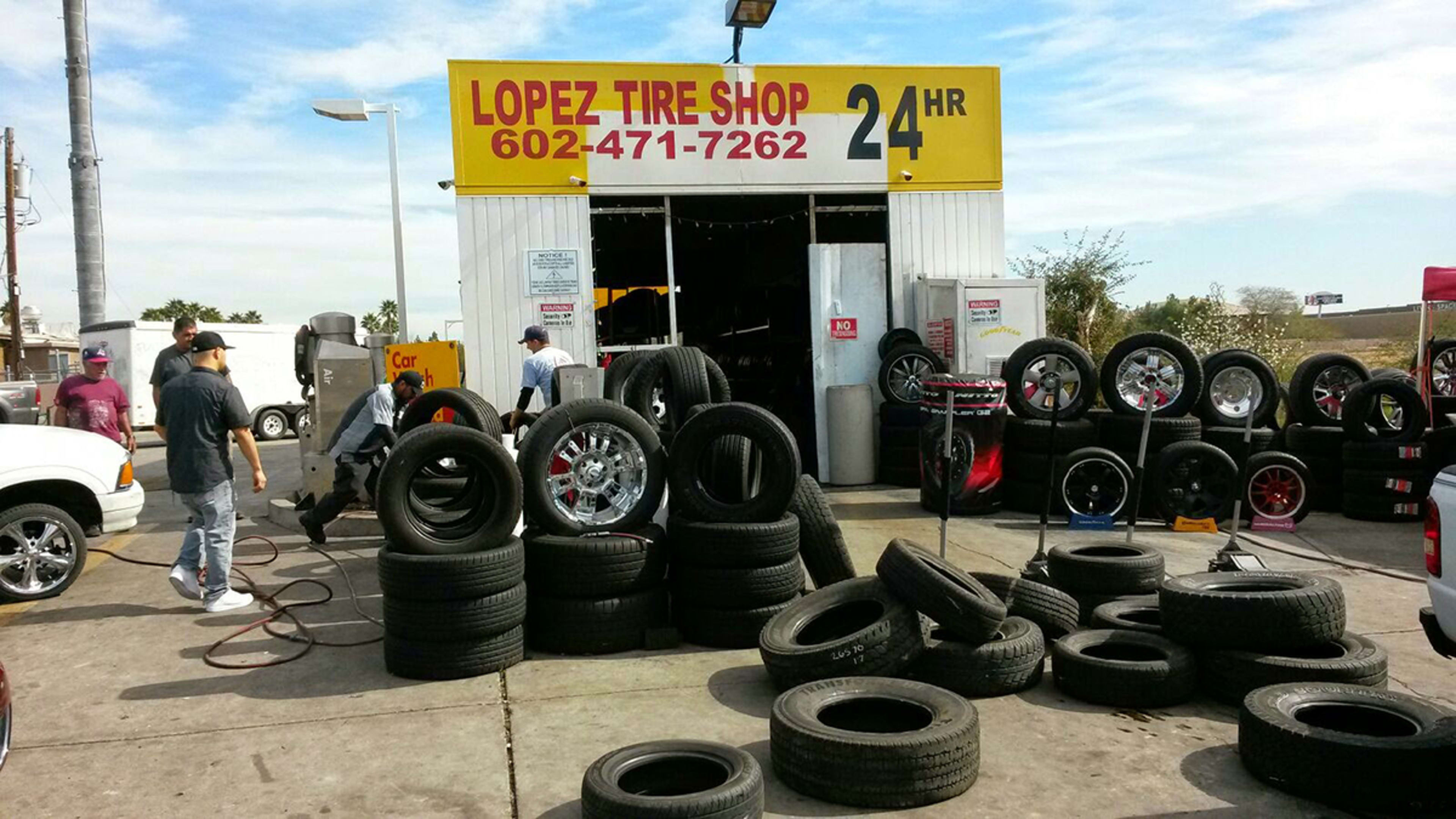Morris Tire: Where Quality Fulfills Cost for Discount Rate Tires Morris IL
The Scientific Research Behind Tire Fixing and Security
When it comes to the intricate globe of tire maintenance and security, there exists a world of scientific research that typically remains hidden by the typical chauffeur - morris tire. The materials that compose a tire, the effect of tire stress on general safety and security, the ramifications of step wear, the elaborate dynamics of tire grip, and the often-overlooked significance of proper wheel positioning all play crucial roles in making sure a lorry runs securely and successfully. As we browse through the intricacies of tire repair and safety, it comes to be apparent that a deeper understanding of these clinical concepts is not just advantageous however essential for every single motorist when driving
Tire Structure and Functionality
What products comprise the make-up of tires, and how do these elements add to their functionality when driving? Tires are complicated products, typically made from a combination of rubber compounds, material, steel cords, and various other chemical ingredients. One of the most usual kind of rubber utilized in tires is synthetic rubber, which offers resilience and resistance to damage. The fabric layers, often made from rayon, nylon, or polyester, give stamina and security to the tire structure. Steel cables are included to improve the tire's toughness and help it keep its shape under different roadway problems.
The rubber compounds use grip and traction, enabling the tire to stick to the roadway surface and offer security during acceleration, braking, and cornering. On the whole, the careful choice and combination of these products guarantee that tires can execute successfully and securely on various roadway surface areas and conditions.
Effect of Tire Pressure on Safety
On the other hand, overinflated tires have much less call with the road surface area, reducing traction and creating uneven wear on the tire footsteps. Correctly filled with air tires also play a crucial function in gas efficiency, as underinflated tires can increase moving resistance, leading to reduced gas mileage. On a regular basis examining and preserving the appropriate tire pressure not only makes sure safety and security yet additionally expands the lifespan of the tires, conserving on replacement prices in the long run.
Footstep Put On and Its Ramifications
Appropriate tracking of tire walk wear is critical for making certain ideal efficiency and security on the road. As tires wear down, the depth of the tread reduces, decreasing the tire's capacity to maintain traction, particularly in damp or unsafe problems. The tread pattern and deepness play an essential duty in transporting water far from the tire to stop hydroplaning and preserving hold when traveling surface area.
Signs of too much tread wear consist of bald places, irregular wear, and the look of wear signs. Bald places suggest local wear, which can cause instability and boosted threat of blowouts. Irregular wear might suggest problems with tire placement, rising cost of living, or suspension elements. Put on indications are built right into the tire walk and end up being noticeable when the tread deepness reaches a specific nadir, suggesting the demand for prompt substitute.

Understanding Tire Grip Dynamics
Keeping an eye on tire step wear not just ensures optimal efficiency and safety and security yet additionally straight influences the traction dynamics of the tires on different roadway surface areas. Tire traction is an essential facet of vehicle handling and safety, as it determines the grip between the tires and the road. Grip dynamics differ depending upon road conditions such as dry pavement, wet roadways, snow, or ice.

Understanding tire traction dynamics is necessary for chauffeurs to adapt their driving behavior according to the road problems. discount tires morris il. Consistently examining tire step deepness my link and problem can considerably enhance traction efficiency, guaranteeing much safer driving experiences across different surface areas
Significance of Correct Wheel Alignment
Guaranteeing right wheel positioning plays an important function in enhancing car efficiency and expanding tire durability. Correct wheel placement includes readjusting the angles of the wheels to maker specs, making sure that they are vertical to the ground and alongside each other. When placement is off, it can result in uneven tire wear, reduced fuel effectiveness, and compromised handling.
Among the key advantages of keeping appropriate wheel positioning is improved managing and security. Misaligned wheels can create the vehicle to draw away, influencing guiding control and overall driving experience. In addition, proper placement promotes also tire wear, protecting against premature tire replacement and minimizing maintenance expenses in the future.

Verdict
In conclusion, the science behind tire repair work and safety and security is vital for keeping automobile performance and ensuring chauffeur safety and security. By recognizing tire composition, stress, tread wear, grip dynamics, and wheel alignment, chauffeurs can stop crashes and lengthen the life expectancy of their tires. Proper maintenance and routine evaluations are essential for ideal tire efficiency and overall lorry safety and security. By adhering to these guidelines, motorists can drive confidently understanding that their tires remain in good problem.
The materials that compose a tire, the influence of tire pressure on total safety and security, the ramifications of walk wear, the intricate characteristics of tire grip, and the often-overlooked importance of proper wheel placement all play crucial functions in making certain a lorry runs safely and efficiently. On the other hand, overinflated tires have less contact with the road surface, decreasing traction and causing unequal wear on the tire footsteps. Routinely examining and keeping the right tire pressure not just makes certain safety and Continue security but also extends the life-span of the tires, conserving on replacement prices in the next lengthy run.
Keeping track of tire step wear not only ensures ideal performance and safety but also directly impacts the traction characteristics of the tires on different road surfaces. Tire grip is a vital element of vehicle handling and safety, as it identifies the hold in between the tires and the road.